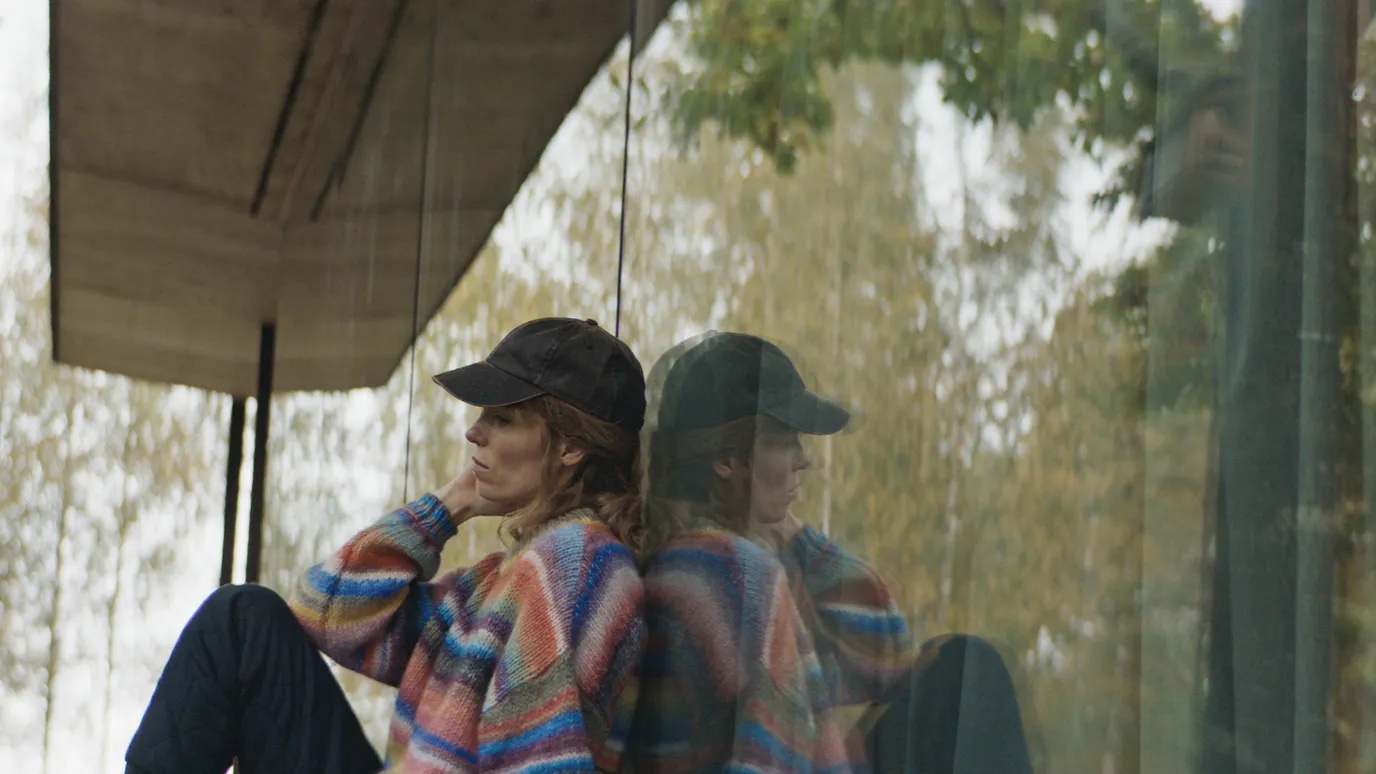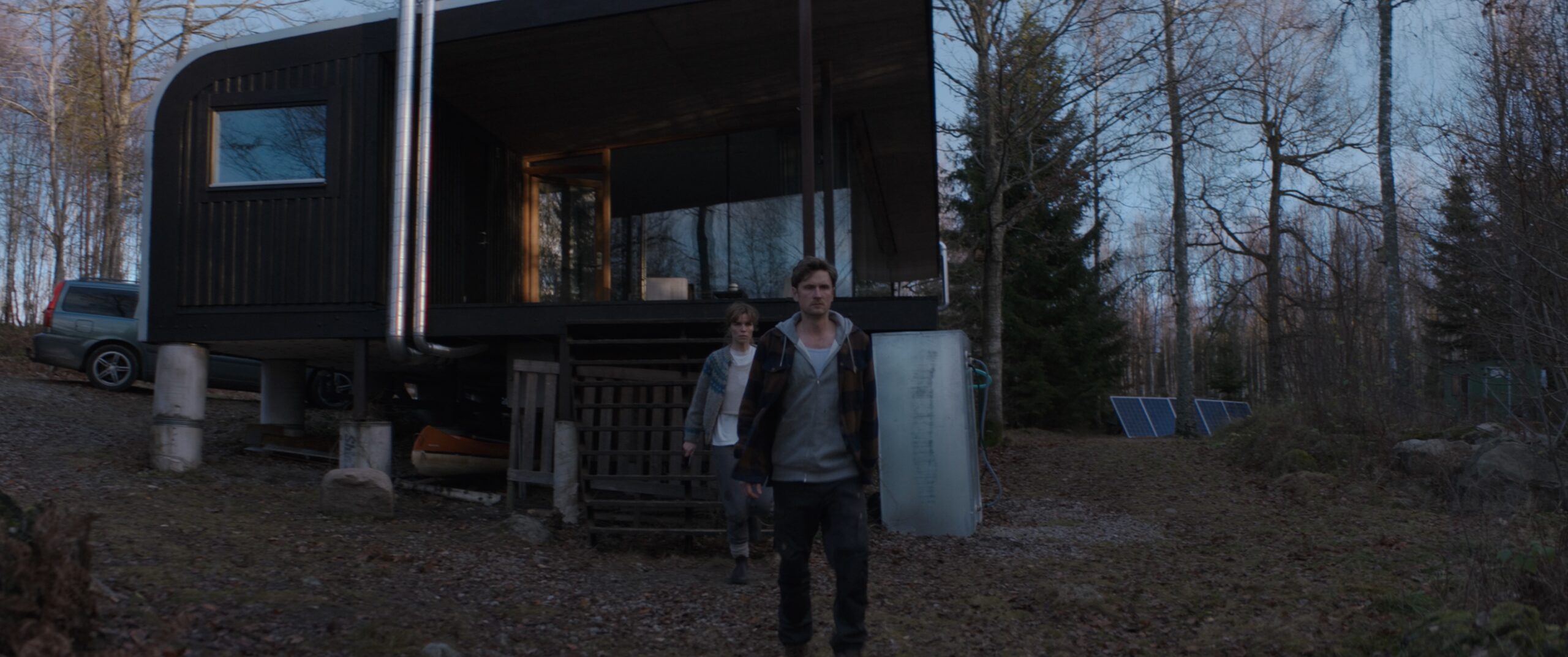interview
Doppelgänger stories acting as sly social commentary are nothing new (think Dostoevsky’s “The Double”), even if the trope is primarily and inextricably bound to psychological drama. But there’s no reason why it can’t do both—not according to Superposition, a Danish film that sits alongside the Scandinavian cinematic tradition of attacking bourgeois sensibilities while also being playful with the uncanny and distressing sensations we more closely associate with horror.
In talking with director and co-writer Karoline Lyngbye at the Edinburgh International Film Festival 2023, a lot of tangentially related films are brought up—Enemy, Under the Skin, Us, Triangle of Sadness, the Dogme 95 movement—all in an effort to triangulate Superposition’s shifting singular nature.

Projektor: The film spends time setting up a satire of academics relating to nature, specifically how ego is often involved. What was the impetus for the story?
Karoline Lyngbye: The modern ego in relationships was definitely one of the first thoughts, along with “moving off-grid,” which is also entwined with the ego, right? Everyone in my age group, myself included, is struggling with modern-day life, and there are so many people who have anxiety or different types of diseases that are difficult to diagnose. It’s just obvious that we’re just going off the cliff with being so overloaded. But we also have this extreme focus on ourselves. I was just interested in seeing if it was possible, in any way, to take a step aside and [learn] what happens after that.
The film is about taking yourself outside of yourself, looking at yourself from the outside. Were there similarities in the writing backgrounds and experiences of your script collaborator Mikkel Bak Sørensen? Or did the screenplay benefit from differences in your perspectives?
On a really basic level, it was quite nice to have a male and a female perspective on it. He was very on point with the male character. But also, he’s more into satire and genre, where I’m more [into] in-depth, psychological kind of things– and also genre. The starting point for the idea was mine, but I came to him at a fairly early point in time, and we developed the doppelgänger as a joint effort. They go to find themselves, so what is the strongest metaphor? What would be the worst thing for these people to encounter?
Did you have any doppelgänger or science-fiction films – eerie and uncanny ones – that acted as a reference point?
We didn’t really have that many references because, well, I think there are not that many. [Sørensen] is very much into the films of [Ruben] Östlund, the Swedish director who won Cannes with Triangle of Sadness. Östlund is very much more satire, but there are similarities, it’s like extended reality, in a way. In terms of references, it was more like, don’t do Us [Jordan Peele’s doppelgänger thriller]. And making sure the metaphor was not something we’ve seen before, and I actually hadn’t seen that before.
Usually doppelgänger stories, you meet either a great version of yourself, or you need a horrible version. It’s a mirror, of course, always. But we were very interested in the fact that they were actually the same. I mean, the circumstances are a little bit different, but also the same. What can happen if you’re just in tiny different circumstances?
Can I ask about the visual look of the film? Your camera moves around a lot. What was the design process with your cinematographer Sine Vadstrup Brooker for how the film would look and feel through the camera?
I feel like it came to us with the location. We definitely wanted that calmness in it, and also not to be too distant from the characters. But we still wanted to have this perspective from the outside. Obviously, someone is looking at them from the outside, and you have this glass house that they live in, so you have natural reflections everywhere, with the lake too.

The setting and location is in Sweden. Was that a writing decision, to take them out of Denmark?
That was a writing decision because Denmark is too small. You can’t be off-grid in Denmark. You’re never even 15 minutes in a car from a small town. So that doesn’t really [work], it’s too small scale. In Sweden, you have huge amounts of just nature.
Out of curiosity, how hard is it to shoot a scene with people playing against their doppelgängers?
It’s really hard. Especially if you have four people. It takes forever. One master shot has to be shot, like, five times. We had like a whole VFX team on set for those scenes. Some of the actors were like, “No, no, no, you touched him with one finger!” Now that shot was ruined.
In terms of your direction, the doppelgängers are written very similarly. When you’re directing these actors, how did you articulate to the actors the differences between these copies? Or did you trust them to come up with their versions and play off themselves?
It was definitely a combination. We talked about it as being just different circumstances, being a bit further in. One couple thinks they have lost a child, another couple hasn’t, so that’s pushed them in a direction in their relationship as well. We called the two male characters Teit 1 and Teit 2. Fairly quickly, Teit 1, the original, is ridiculed, so he has a different drive. And the other one is in the second couple – they have already experienced the worst, and have decided to split up. They have that combination of being less desperate, but also more bitter. But I feel like I was actually surprised when I first saw Stine 2 come to life. Marie [Bach Hansen] did an amazing job – you feel instantly that she’s different. She’s another character.
That was a big concern, and [now] one of the things that I’m really excited about, because it was clear in the editing process fairly quickly that you accepted the doppelgängers and you completely understood. It’s not just glasses off and on. Everyone saw and understood the difference between them.
Curated by humans, not algorithms.
© 2024 A Good Movie to Watch. Altona Studio, LLC, all rights reserved.